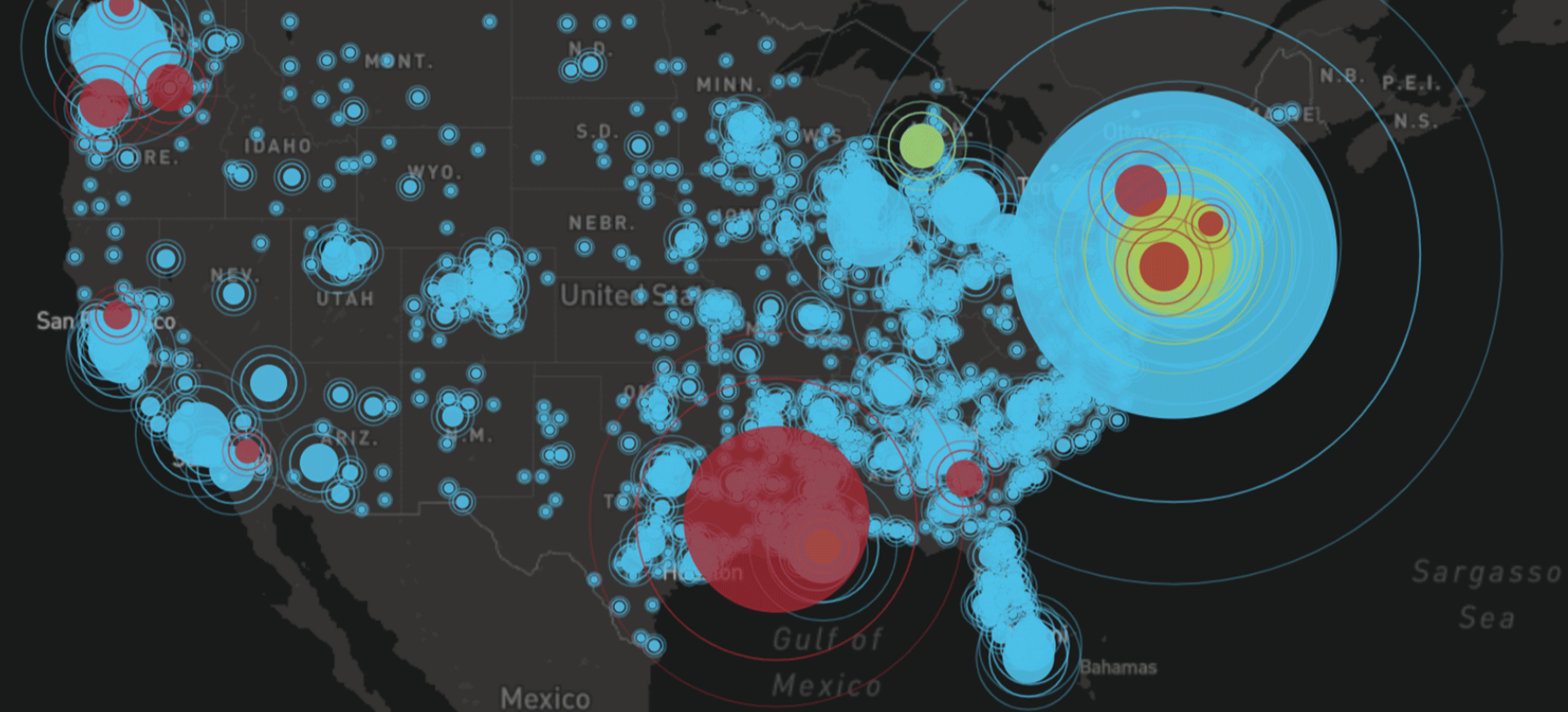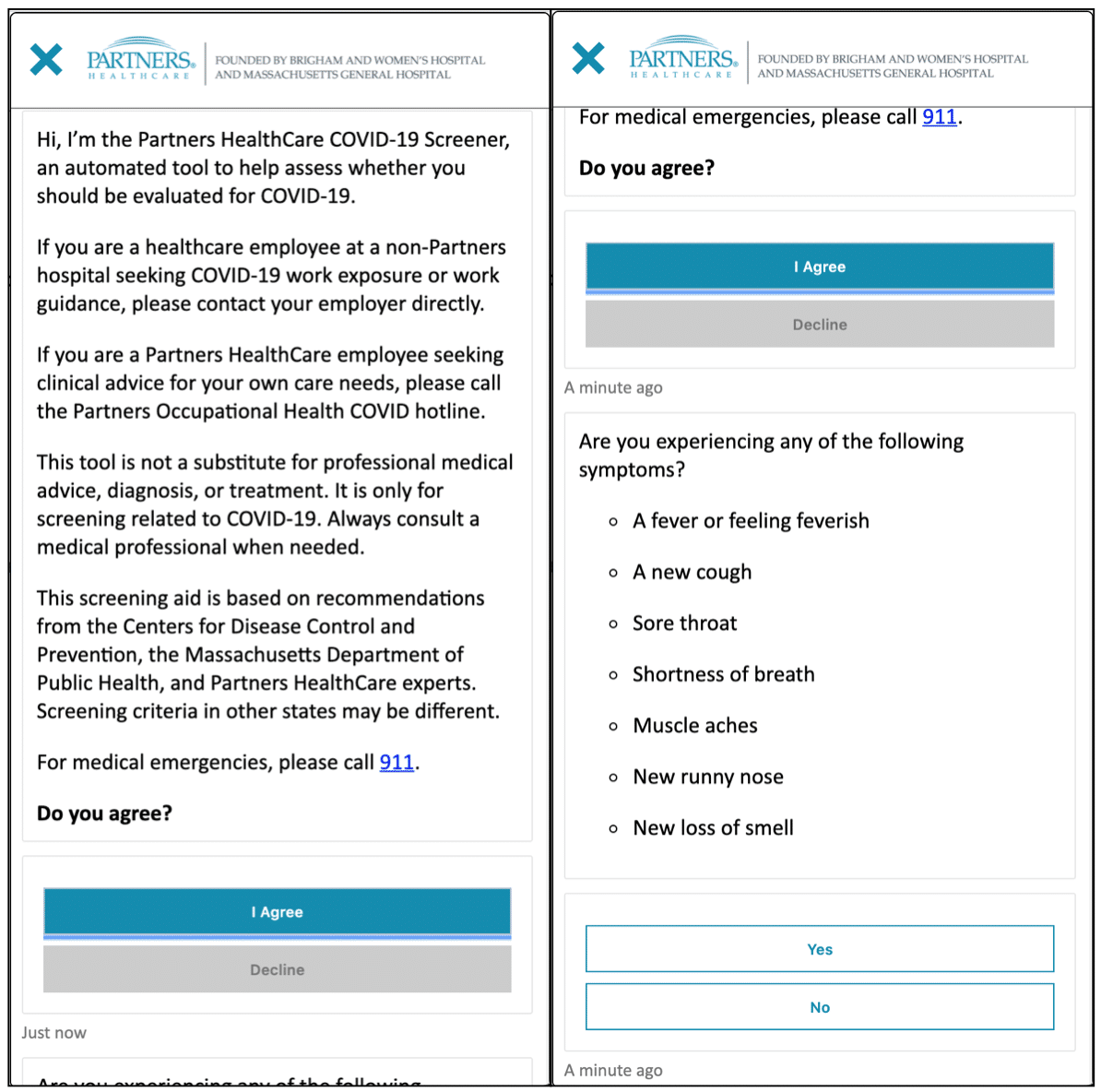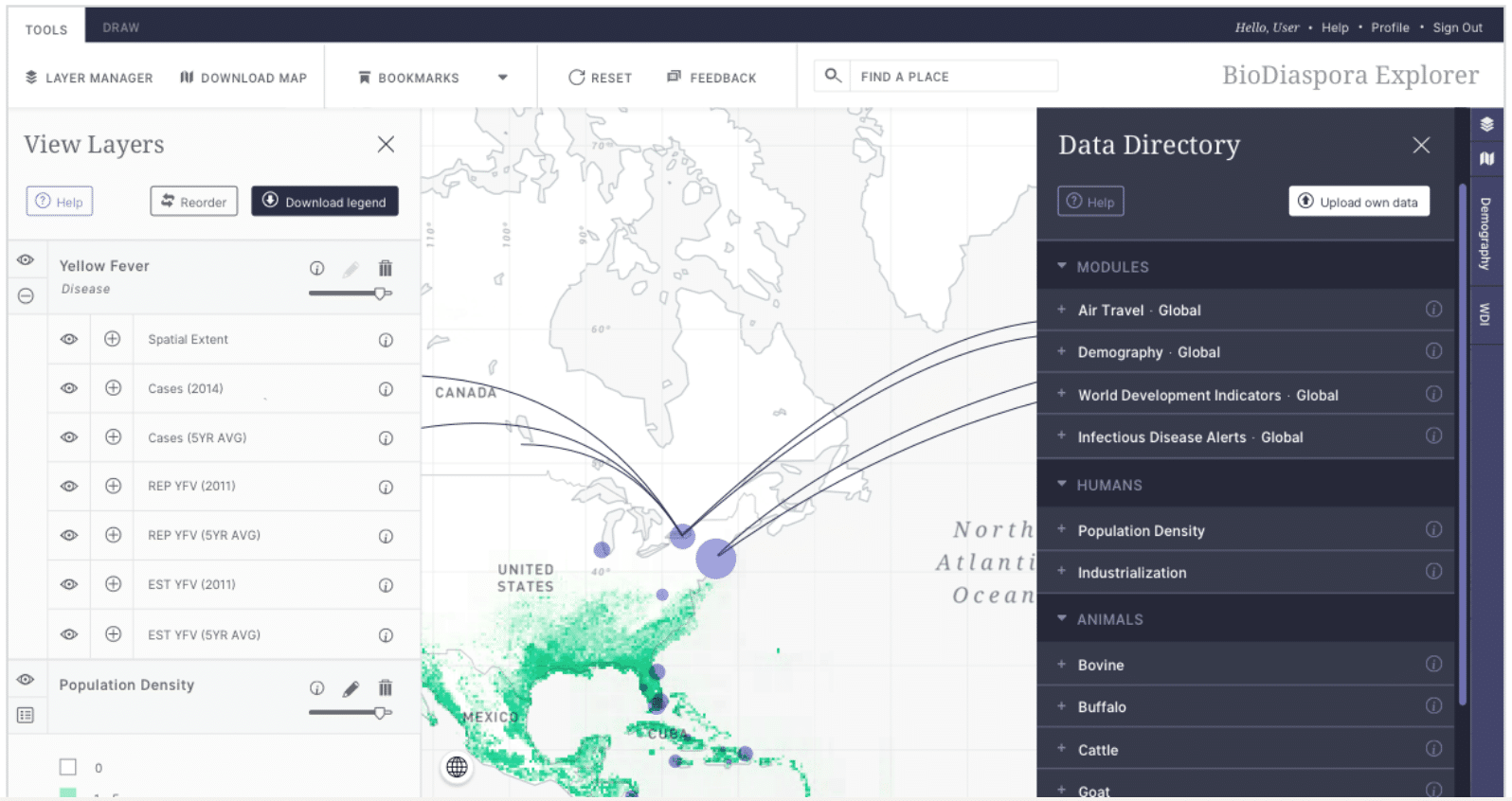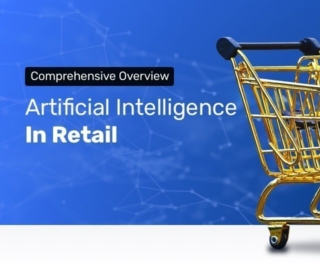
The COVID-19 pandemic has caused incredible disruption in healthcare systems across the world, as well as an immediate demand for innovative solutions to the growing number of coronavirus patients. Many AI vendors are already trying to find ways they can serve this demand through augmenting their machine learning-powered products – from diagnostics interfaces to radiology solutions and everything in between.
Current AI applications for diagnostics and radiology are typically made for specific use-cases that may not be a fit for a global pandemic like COVID-19.
In late 2018, the World Bank commissioned us to research and speak about the landscape of AI tools for mobile diagnostics – and we were fortunate to have that research (and our interview contacts from that project) on hand when this virus struck.
Additionally, healthcare companies and governments might benefit from AI-enabled outbreak tracking applications that rely on global news and data on local ecologies. This may help us better understand the COVID-19 outbreak and find ways to prevent a similar crisis from happening again.
In this article, we explore three examples of AI-enabled solutions that healthcare companies are currently using to combat the pandemic:
- Chatbots for Diagnostics: Boston’s Partners HealthCare is currently using a natural language processing (NLP) application to screen potential patients for COVID-19 before they come to the hospital. This will likely allow the company to screen more potential COVID-19 patients and keep their patient numbers from reaching critical capacity.
- Radiology for Pandemic Response: The International Consortium for COVID-19 Imaging AI (ICOVAI) is working on single AI solution for COVID-19 on chest CT scans. The solution has yet to be released in beta. This consortium hopes to make this solution capable of prognosis prediction in order to help schedule safe and efficient patient room transfers.
- Outbreak Tracking: The coronavirus outbreak was originally detected by the AI vendor BlueDot with their NLP and data analytics solution. This discovery may provide helpful information for detecting other outbreaks of similar magnitude in the future.
We begin our explanation of the current use-cases for AI against COVID-19 with diagnostic chatbots made to discern which patients have contracted the virus.
Chatbots for Diagnostics
Some medical chatbots can act as a guide for patients which explains how to administer a self-test for some conditions. As shelter-in-place orders become more frequent, companies may choose to distribute similar tests to keep hospital volumes as low as possible. For example, the FDA has already approved a home urine test and analysis kit that uses a computer vision-powered smartphone app to scan the test strips. The pandemic emphasizes the usefulness of healthcare chatbots as more patients try to comply with social distancing guidelines.
The NLP algorithms behind these chatbots are made to recognize patient responses to diagnostic questions and suggest a preliminary diagnosis using medical data from the client company’s database. Healthcare companies may use these chatbots to deliver immediate medical advice to their patients and a health summary for their primary care physician before their next visit. A patient might use this type of chatbot to determine if they may have coronavirus so that they may call their doctor to inquire if they should be tested.
A healthcare company would need to train the machine learning algorithm to recognize the most common criteria for diagnosis or testing eligibility. For novel coronavirus, this includes shortness of breath, runny nose, a loss of smell, and some others. Additionally, the chatbot would need to be trained to recognize the terms people commonly use for these symptoms, which may vary from patient to patient or across demographics.
Chatbots still cannot legally replace a formal diagnosis from a doctor, but this type of application can still be used to screen patients for a possible illness and determine whether they should get formally tested for it.
This is what Boston’s Partners HealthCare, a non-profit hospital and physicians network, is currently using their COVID-19 screener interface for.
Partners HealthCare claims this screener uses AI to track patient responses to diagnostic questions to determine if they should be tested for coronavirus or not. Each question is based on Partners HealthCare data or content from the U.S. Centers for Disease Control and Prevention (CDC).
The image below shows the COVID-19 screener chatbot asking the user about their symptoms:

It’s unclear to what extent this simple chat interfaces actually uses AI or machine learning. Other COVID-19 screening bots claim to use AI, but many of the questions can successfully be frames as if-then statements, and AI may only be needed for edge cases, or for determining the meaning of open-ended questions.
While the interface is not as conversational as some of its contemporaries it can purportedly accurately detect when a patient is eligible for a coronavirus test. Additionally, patients with less serious symptoms and who may not need to be tested can receive relevant advice and virtual care options. Higher-risk and higher-acuity patients can be directed to important resources such as testing sites, new clinics in their area, or possibly emergency departments.
Before implementing this chatbot solution, Partern’s claims that the COVID-19 hotline was overwhelmed with a wait time of over 30 minutes. This purportedly caused many callers to hang up and not receive what may have been vital medical advice.
While neither Harvard nor Partners HealthCare reported on how much traffic the chatbot pulled away, we can infer that this solution is helping healthcare providers in the Boston area advise and screen patients. Harvard Business Review anticipates that this solution will pull significant traffic away from their COVID-19 phone hotline and thus allow for more people to be screened and possibly tested for coronavirus – potentially saving man-hours and serving more concerned users more quickly.
Radiology for Pandemic Response
The World Health Organization (WHO) summarizes effective pandemic response into four key priorities:
- Preparation
- Detection and protection
- Reducing transmission
- Innovation and learning.
Healthcare companies could use machine vision to help doctors detect physical abnormalities within patients, along with signs of disease. This type of application has seen use prior to the current pandemic, but the resulting pressure on hospitals to treat patients faster has highlighted machine vision radiology as a use case. In order to properly image a patient’s lungs for example, doctors will use an endoscopic camera fitted to a machine vision system trained to detect the appearance of structures like polyps, abrasions, or scar tissue from significant coughing in the case of COVID-19 patients.
A machine vision-enabled endoscopy may reveal lung damage and abnormalities automatically as the system detects the shape and size of ailments or disease indicators it has been trained to recognize.This may also be helpful to some healthcare providers looking for an accurate method of discerning the condition of a patient’s lungs. Additionally, these machine vision solutions can detect these same types of abnormalities from computed tomography (CT) scans.
One example of an AI vendor using their medical solutions to help fight COVID-19 is Aidence. This company uses a machine vision radiology solution called Veye Chest to help radiologists identify pulmonary abnormalities such as nodules inside the lungs. They also claim the system is compatible with most hospitals’ existing EMR/EHR database. Veye Chest has received the CE marking, which allows its use in any hospital within the European Union and indicates conformity to the medical device standards put in place by the European Economic Area.
The Veye Chest application is made to detect the presence or indicators of pulmonary nodules in CT scans of a patient’s lungs. A radiologist could use it to determine the difference between a benign or malignant nodule or identify other threats to a patient’s lung health. The software analyzes an inserted CT scan and provides an annotated version of it for the doctor to review. This also includes a text description of the software’s findings.
Below is an image of an annotated CT scan image of a patient’s lung as produced by Veye Chest. The software has detect a pulmonary nodule within the patient’s right lung, and it is highlighted with a numbered label:
![Aidence [Veye Chest Report]](https://emerj.com/wp-content/uploads/2020/05/Aidence-Veye-Chest-Report.png)
Nico.lab typically offers an application they call StrokeViewer, which purportedly uses deep learning to support clinical decisions regarding stroke patients. This machine vision application analyzes medical imaging of the brain to create an assessment of biomarkers pertaining to damage caused by a stroke. These capabilities along with that of VeyeChest likely use similar enough data sets that Aidence and Nico.lab can easily understand each other’s approach to ML development. It follows that medical imaging analysis be their primary focus area when developing a new radiology solution for the pandemic.
The new solution from ICOVAI – not yet released in beta – will hopefully be able to detect the coronavirus in patients and enable an increased testing capacity for suspected patients. The software, once completed, will likely determine the severity of a patient’s lung condition by measuring the damaged areas in comparison to the total surface area of their lungs – allowing healthcare workers to assess the severity of a patient’s condition.
ICOVAI hopes that their future solution will be capable of prognosis prediction – which would allow it to determine the likelihood of a patient needing to be transferred to the ICU.
This can be particularly helpful to hospitals as the solution is combined with a web-based Digital Imaging and Communications (DICOM) viewer. A COVID-19 patient may not show signs of further health decline before an ICOVAI report comes in with a prediction. The prediction might show that the patient is highly likely to be moved to the ICU soon, which could alert providers to service the patient and prepare a new room for them.
AI for Outbreak Tracking
According to the CDC situation summary on the pandemic, there is very little pre-existing immunity against COVID-19 and so it is able to sustainably spread worldwide. This is the first pandemic known to be caused by a new strain of coronavirus. While most research and guidance around pandemics is specific to influenza, many of the same best practices still apply. Health organizations and governments will need the most reliable technology accessible for tracking this outbreak and helping to slow it down.
Population growth combined with our continued interaction with animals creates more opportunities for diseases and viruses to spread from animals to humans. This has been seen in recent history in both the U.S. and West Africa due to the outbreaks of SARS, MERS, and Ebola. AI can now help researchers make predictions about “hotspots” where new diseases may arise and outbreak into the surrounding human population. This type of application would leverage local animal population data, information on known viruses, human demographic profiles, and data on cultural practices within different areas of the world to predict outbreaks. Governments might also use results from this type of solution to create more proactive initiatives for preventing outbreaks.
Outbreak tracking solutions can also help researchers detect diseases faster in order to start developing a cure more quickly. When a human contracts a previously unknown virus government and public health leadership should not waste any time developing a response strategy and searching for a cure.
Some of these organizations might choose to use NLP text mining to recognize indicators of underreported or previously unknown symptoms. This may come in the form of public social media data, emergency services data, and ambulance data so they can detect anomalies or new developments as people keep getting admitted to hospitals.
Hospitals may be able to benefit from outbreak tracking solutions in tandem with existing AI and machine learning health tracking solutions. A machine learning algorithm combined with an IoT health device such as an Apple watch or another proprietary accessory might be able to track changes in a patient’s blood pressure or heart rate. Some may be able to detect changes in breathing such as frequent coughing. A hospital making use of these may benefit from the automatic alerts they receive about each patient in combination with outbreak tracking alerts. For example, if a hospital received an alert of a likely outbreak spot near their location, they may review all of the IoT health alerts of their patients to detect any early signs or symptoms of the detected outbreak.
The first detection of the COVID-19 outbreak came from the AI vendor BlueDot on December 31st, 2019. BlueDot’s software can purportedly scan foreign news articles, animal and plant disease data, and government proclamations to warn their clients of potentially dangerous areas. The company claims to use NLP across multiple languages to track the global news, and then send the data to epidemiologists so they can determine how likely a potential outbreak might be.
The following image from BlueDot shows what an outbreak analyst might see when operating the application. News insights are listed on the left of the map view of the area the analyst is studying. At the same time, the user might receive automatic alerts about pertinent updates or changes, as shown by the smartphone on the right:

Indeed, hospitals may benefit from access to an outbreak tracking solution that takes into account local news and ecological data. The interface above combined with insights about their patient population may help a hospital or healthcare network prevent further transmission of the disease between patients and healthcare workers.
Header image credit: University of Maryland







